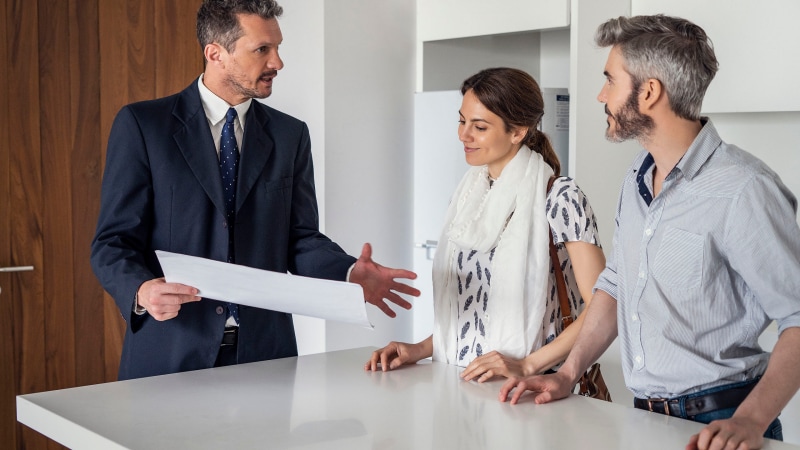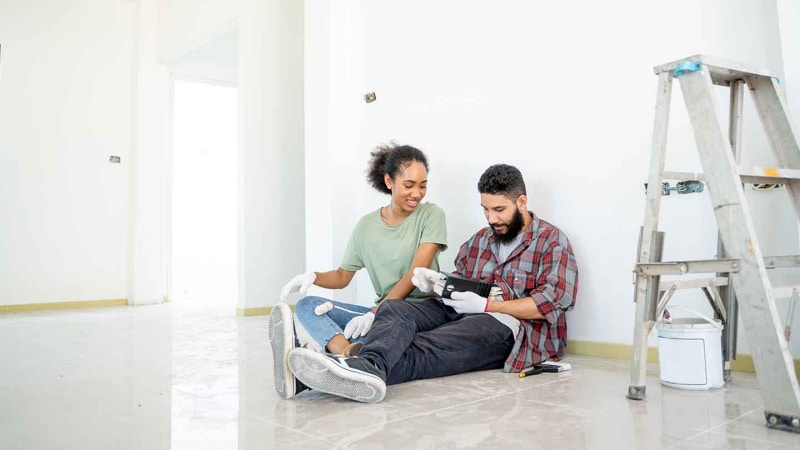How To Buy a Second Home With No Money Down

Quick insights
- It is technically possible to acquire a second property without making a down payment. However, caveats apply, and they generally can’t be used as second homes or investment properties.
- If you meet the eligibility requirements, you can use a VA loan to finance a second property without a down payment, but the property must become your primary residence.
- Assumable mortgages and lease-to-own agreements are other creative options that can allow you to finance a second property with no money down; however, these options may involve more stringent lender requirements and terms which may not be ideal for all buyers.
If you want to use a conventional loan to purchase a second home, you’ll need to put at least 10% down. If you want to use it as an investment property, you’ll need to put 25% down. However, there are other ways to finance a second home purchase that don’t require as much upfront. Understanding your options can help you choose a strategy that fits your financial goals and timeline.
Can you buy a second home with no money down?
Yes, it’s possible to acquire a second property without making a down payment, but not a second home—meaning a property that isn’t used as your primary residence. If you want to finance the acquisition of a second property, it’s technically possible if you get a little creative. Some potential avenues include government-backed loans, assumable mortgages and lease-to-own agreements.
How to finance a second home with no money down
While these approaches aren’t available to everyone, they can offer a path forward for qualified buyers. Below, we break down the strategies in more detail.
Government-backed loans
The U.S. Department of Veterans Affairs (VA) and the U.S. Department of Agriculture (USDA) both offer loan options that don’t require a down payment. Both VA and USDA loans come with unique sets of eligibility requirements. Chase does not offer USDA loans at this time.
- VA loans come with requirements related to military service history.
- USDA loans come with requirements related to property location and income limits.
Those requirements are separate from the lender's underwriting requirements related to credit score and your debt-to-income (DTI) ratio. Assuming you can meet both the loan eligibility and lender underwriting requirements, these loans may be a viable option.
However, the no down payment option is only for primary residences, meaning borrowers must personally occupy the dwelling., You can purchase another property, but it will have to be your primary residence and not a true second home under this option.
If you pursue this strategy, you might need to adjust your mortgage on your first property—particularly if it specifies that it must be your primary residence. Depending on the equity you have built up, it may be possible to refinance to be an investment property.
Assumable mortgages
With an assumable mortgage, the buyer takes on or assumes the seller’s existing mortgage. In situations where the lender allows this, it’s possible to assume the mortgage without a down payment. Typically, FHA, VA, and USDA loans are assumable. In contrast, assumptions may not be allowed on conventional mortgages—unless the lender approves and all the required credit and transfer conditions are met. You’ll also need to meet the lender’s underwriting requirements in order to assume the mortgage; the ultimate decision isn’t up to the seller.
Rent-to-own agreements
Rent-to-own agreements can be structured in two ways, either as a lease with the option to buy or as a lease purchase. Essentially, at the end of the term, you’ll either be required to purchase the home or have the option to do so.
These agreements may be structured so a portion of your rent goes toward the eventual purchase price, allowing you to build equity over time. At the end of the lease portion of the agreement, the portion of your rent that went toward the purchase price can essentially be converted into your down payment.
How to buy a second home with a low down payment
Some additional options technically involve a down payment, but they function much differently than 10% down for a conventional loan on a second home.
FHA loans
FHA loans require a 3.5% minimum down payment. It’s not zero, but it’s considerably less than the 10% required for a conventional loan. However, the same caveat applies as with other government loans that a property purchased with an FHA loan must be your primary residence.
Tapping into your home equity
Another avenue is to leverage the equity you have in your first property. There are multiple ways to do this, such as a cash-out refinance, home equity loan or home equity line of credit (HELOC). The upshot is you can use the equity you take out as the down payment on the second property. Technically, you’re still making a down payment with this tactic, but you don’t have to save up another down payment from scratch. This can make it more accessible to buyers.
Keep in mind that borrowing against your equity will increase your debt. Lenders also limit the amount you can borrow, usually at 80% of the loan-to-value (LTV) ratio.
Pros and cons of getting a second home with a minimum down payment
While it may be possible to purchase a second home with a minimal down payment, there are advantages and disadvantages versus taking the time to save up for a larger down payment.
Pros
- Lower upfront costs: You don’t need to save as much before purchasing.
- Buy into the market faster: The sooner you buy into the property, the sooner you can begin building equity.
- Potential investment or rental opportunities: You could generate income from renting out the property, if you aren’t using it as your primary residence.
Cons
- Fewer mortgage options: Low down payments limit your mortgage options and can’t be used for second homes you don’t intend to use as a primary residence.
- Higher monthly payments: The lower your down payment, the higher your LTV ratio, which increases your monthly payments.
- May require mortgage insurance: You may owe private mortgage insurance (PMI) on a conventional loan when putting less than 20% down.
Ultimately, the right approach will depend on your financial situation, risk tolerance and long-term goals.
In summary
It’s possible to buy a second home with no money down. However, that doesn’t mean it’s the right choice for everyone. Take the time to explore your options and weigh the tradeoffs versus saving up for a larger down payment. What works will depend on your financial comfort level, future plans and how quickly you hope to move forward.



